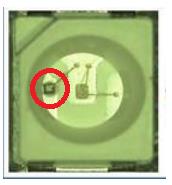
Electrostatic discharge (ESD) is a sudden transfer or ‘discharge’ of static charge from one object to another which can cause damage to LED components and assemblies. ESD is more commonly known as “static electricity”. The good news is that ESD damage is generally rare due to inbuilt LED protection, effective ESD handling and protection via circuitry. But the bad news is that it can be latent and cause reduced product life and eventual LED failure.
What causes ESD?
The first stage of an ESD event is the build-up of a static charge on an object, whether that is a surface, tool or indeed even a human! A static charge can exist on any object that has the properties of an electrical insulator and that is coming into contact with other materials. In other words, static charges are very common but often go unnoticed. An electrostatic discharge occurs when either an object comes into contact with an electrical conductor with a connection to ground or when two objects of opposing changes (negative and positive) come into contact.
What damage can ESD do?
The sudden movement of electrons that constitutes an ESD event can have a profound detrimental impact on electronic components. In the case of LEDs, ESD can result in the complete failure of a device, which results in the device not conducting current, a partial failure (such as a reduction in light output) or the creation of a latent defect that could manifest itself at a later date and shorten the lifetime of the LED.
How do I minimise ESD?
Prevention measures against ESD include: observing best practices in terms of ESD handling and designing in on-board in-circuit protection. ESD handling includes setting up and auditing activities within ESD protected areas that ensure safe handling of sensitive components as part of the manufacturing process, as ESD is most commonly caused by people!
In-circuit protection is often centred around the application of so-called transient-voltage suppressor (TVS) devices as part of the circuit design. These devices are designed not to conduct current until a certain threshold voltage is reached.


